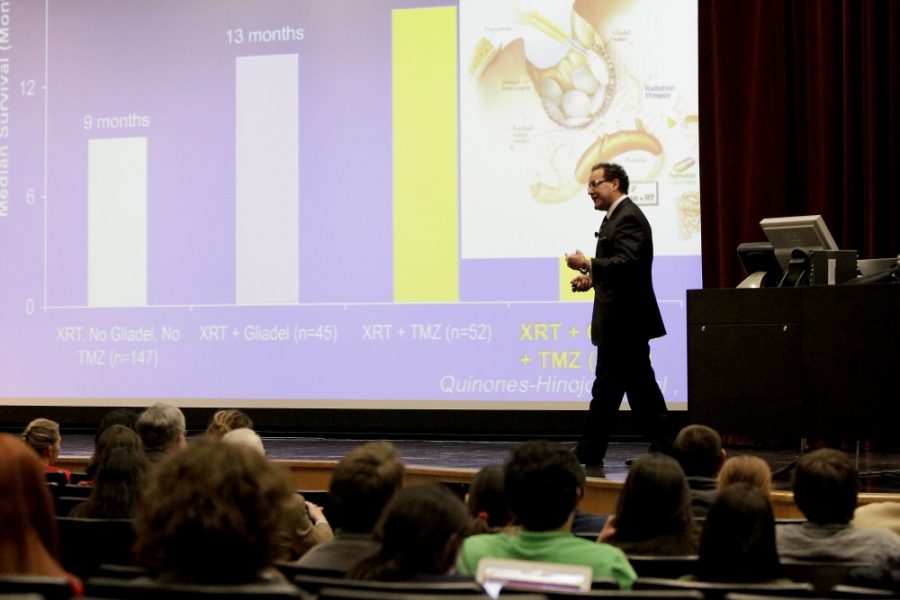For Dr. Alfredo Quiñones-Hinojosa, an ex-migrant worker and world-renowned neurosurgeon at John Hopkins University, patients are inspiring and provide enriching personal histories. The UA’s neuroscience department welcomed Quiñones-Hinojosa on Monday to learn about his life and experiences.
John Hildebrand, neuroscience department head, opened the 45-minute presentation on Quiñones-Hinojosa by speaking about his “indomitable and optimistic spirit.”
“Having such an optimistic spirit is important in his field of work where every patient will die — even after surgery,” Hildebrand said.
Quiñones-Hinojosa said he is passionate about working in an intense field such as neurosurgery and finds his patients motivatonal. Migdalia Gonzalez, a biochemistry senior, attended the presentation and said she hopes to one day work in the same field as Quiñones-Hinojosa.
“I heard about him six or seven years ago, and I thought he was so inspirational that we are so similar,” she said. “My parents are from the same place he is and I’m also working in a neural science lab.”
Gonzalez’s parents are migrants from Mexicali, Mexico, and arrived in the states in the 1980s, which is around the same time Quiñones-Hinojosa migrated to the San Joaquin Valley at the age of 19.
Quiñones-Hinojosa grew up as the middle child and attended first grade at the age of 5, which was around the same age he also began working at a gas station to help support his family. By age 11, he began working in cotton and tomato fields and continued to do so after arriving in the United States. After he moved to California, he started taking English as a second language courses at the local community college, and after becoming a U.S. citizen was able to attend the University of California, Berkeley. He later attended Harvard University where he saw his first open brain surgery, which inspired him to become a neurosurgeon.
Quiñones-Hinojosa described the image of a pulsating brain as a “beautiful dance … with the heart.” It was his interest in human behavior, however, that got him into the field of neuroscience, saying that he “always wondered why people are the way they are despite having brains that are essentially the same, but the people themselves are so different.”
For him, the brain is “the most enigmatic and most beautiful organ of the body.” In addition to working as a researcher and neurosurgeon, Quiñones-Hinojosa has recently written an autobiography, “Becoming Dr. Q,” which tells more about his life and how he went from a migrant worker to a neurosurgeon.
While many regard Quiñones-Hinojosa as inspirational, he is also regarded as one of the best in his field. He leads a team of 23 brain surgeons and 26 residents in both treating and operating on brain cancer patients in addition to conducting research in ways to prevent the spreading of cancerous cells in the brain after surgery.
The spread of these cells is called migration, and is one of the reasons the mortality rate for brain cancer is so high, particularly for glioblastoma multiforme. This type of tumor is a terminal and malevolent tumor of the brain, which is Quiñones-Hinojosa’s specialty.
Many advancements have been made over the past 10 to 20 years in the field of neurology and the treatment of brain cancer. While the mortality rate of glioblastoma multiforme patients is still extremely high at almost 90 percent, according to Hildebrand, the survival rate has gone from nine months to almost two years. And even though Quiñones-Hinojosa said that he cannot cure brain cancer, he can do what he can to one day stop it from spreading.









